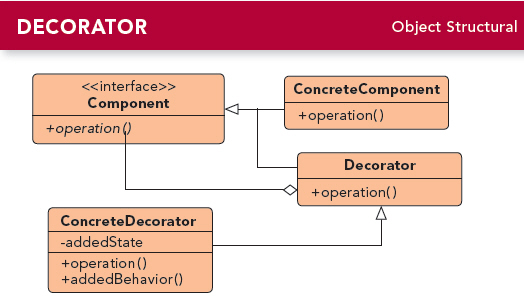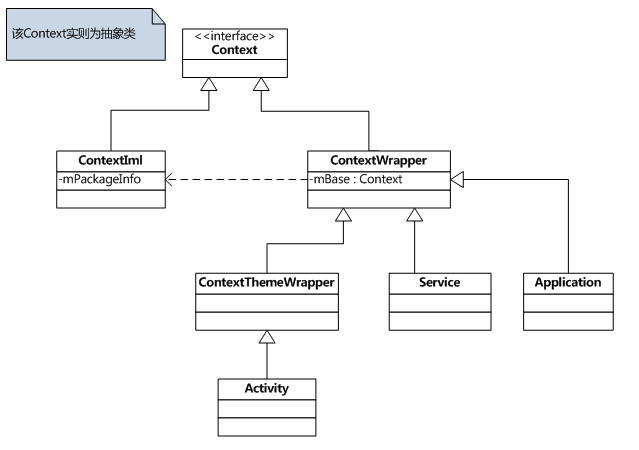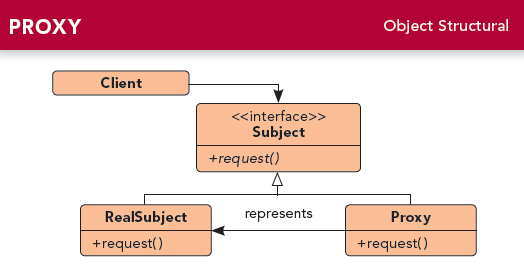设计模式之装饰者模式 VS 代理模式
设计模式之装饰者模式 VS 代理模式
目录
- 装饰者模式
- 简介 && Java 使用场景
- UML && 代码实现
- Android 源码场景
- 代理模式
- 简介 && Java 使用场景
- UML && 代码实现
- Android 源码场景
- 装饰者、代理模式异同
- 对比
- 总结
装饰者模式
简介 && Java 使用场景
Decorator模式(别名Wrapper):用户扩展功能,动态将职责附加到对象上。使用装饰者比使用继承更加灵活。
我们经常看到的I/O 处理类,实际上就使用到了装饰者模式。

public class DecoratorTest { public static void main(String[] args) throws IOException { // 流式读取文件 DataInputStream dis = null; try{ dis = new DataInputStream( new BufferedInputStream( new FileInputStream("test.txt") ) ); //读取文件内容 byte[] bs = new byte[dis.available()]; dis.read(bs); String content = new String(bs); System.out.println(content); } finally{ dis.close(); } } }UML && 代码实现

public interface Component { void operation(); } public interface Decorator extends Component { void addedBehavior(); } public class ConcreteComponent implements Component { @Override public void operation() { System.out.println("operation!"); } } public class ConcreteDecorator implements Decorator { private Component decoratedComponent; public ConcreteDecorator(Component decoratedComponent) { this.decoratedComponent = decoratedComponent; } @Override public void operation() { System.out.println("decorated operation!"); decoratedComponent.operation(); } @Override public void addedBehavior() { System.out.println("addedBehaviour!"); } } public class Client { public static void main(String[] args) { Component component = new ConcreteComponent(); component.operation(); // 输出: // operation! Decorator decorator = new ConcreteDecorator(component); smart.operation(); smart.addedBehavior(); // 输出: // decorated operation! // operation! // addedBehaviour! } }Android 源码场景
HeaderViewListAdapter.java
public class HeaderViewListAdapter implements WrapperListAdapter, Filterable { private final ListAdapter mAdapter; public HeaderViewListAdapter(ArrayList<ListView.FixedViewInfo> headerViewInfos, ArrayList<ListView.FixedViewInfo> footerViewInfos, ListAdapter adapter) { mAdapter = adapter; ... } ... public int getCount() { if (mAdapter != null) { return getFootersCount() + getHeadersCount() + mAdapter.getCount(); } else { return getFootersCount() + getHeadersCount(); } } ... public View getView(int position, View convertView, ViewGroup parent) { // Header (negative positions will throw an IndexOutOfBoundsException) int numHeaders = getHeadersCount(); if (position < numHeaders) { return mHeaderViewInfos.get(position).view; } // Adapter final int adjPosition = position - numHeaders; int adapterCount = 0; if (mAdapter != null) { adapterCount = mAdapter.getCount(); if (adjPosition < adapterCount) { return mAdapter.getView(adjPosition, convertView, parent); } } // Footer (off-limits positions will throw an IndexOutOfBoundsException) return mFooterViewInfos.get(adjPosition - adapterCount).view; } ...ContextWrapper.java

public class ContextWrapper extends Context { Context mBase; public ContextWrapper(Context base) { mBase = base; } ... }代理模式
简介 && Java 使用场景
代理模式(Proxy):给一个对象提供一个代理,并由代理对象控制对原对象的引用, 对它的客户隐藏一个对象的具体信息。主要用于远程代理、虚拟代理和保护代理。其中保护代理可以进行访问权限控制。
JDK提供的动态代理就使用到了代理模式,用户能够动态的拿到代理类并调用代理方法
public interface Subject { public void request(); } public class RealSubject implements Subject { @Override public void request() { System.out.println("from real subject"); } } public class MyInvocationHandler implements InvocationHandler { //持有被代理类的引用 private Subject real; public MyInvocationHandler(Subject real){ this.real=real; } public Object invoke(Object proxy, java.lang.reflect.Method method, Object[] args) throws Throwable { //执行被代理对象的方法 Object obj=method.invoke(real, args); //obj是method方法返回的数据 return obj; } } public class DynamicTest { public static void main(String[] args) { Subject real=new RealSubject(); InvocationHandler h=new MyInvocationHandler(real); //获得被代理类所实现的所有接口的数组,在这里数组中只有Subject.class一个元素 Class[] interfaces= real.getClass().getInterfaces(); //获得类加载器 ClassLoader loader=h.getClass().getClassLoader(); //获得动态代理类的实例 Object s=java.lang.reflect.Proxy.newProxyInstance(loader,interfaces, h); //通过代理类对象调用方法 Subject sub=(Subject) s; sub.request(); } }UML && 代码实现

public interface Subject { public void request(); } public class RealSubject implements Subject { @Override public void request() { System.out.println("from real subject"); } } public class Proxy implements Subject { private RealSubject realSubject; public Proxy(Subject realSubject){ this.realSubject = realSubject; } @Override public void request() { //请求前的操作 preRequest(); realSubject.request(); //请求后的操作 postRequest(); } private void preRequest(){} private void postRequest(){} } Android 源码场景
- Binder
- WindowManagerImpl.java 代理 WindowManagerGlobal.java
装饰者、代理模式异同
对比
UML

Decorator类、Proxy类
public class ConcreteDecorator implements Decorator { private Component decoratedComponent; public ConcreteDecorator(Component decoratedComponent) { this.decoratedComponent = decoratedComponent; } @Override public void operation() { System.out.println("decorated operation!"); decoratedComponent.operation(); } @Override public void addedBehavior() { System.out.println("addedBehaviour!"); } }public class Proxy implements Subject { private RealSubject realSubject; public Proxy(Subject realSubject){ this.realSubject = realSubject; } @Override public void request() { //请求前的操作 preRequest(); realSubject.request(); //请求后的操作 postRequest(); } private void preRequest(){} private void postRequest(){} } 总结
- 装饰器模式关注于在一个对象上动态的添加方法,而代理模式关注于控制对对象的访问。
- 代理模式是对它的客户隐藏一个对象的具体信息。当使用代理模式的时候,我们常常在一个代理类中创建一个对象的实例。
- 装饰器模式的目的不在于控制访问,而是扩展功能。当我们使用装饰器模式的时候,通常的做法是将原始对象作为一个参数传给装饰者的构造器。
参考资料
- Examples of GoF Design Patterns in Java's core libraries
- iluwatar/java-design-patterns
- Android设计模式源码解析之Proxy模式
正文到此结束
热门推荐
相关文章
Loading...











![[HBLOG]公众号](https://www.liuhaihua.cn/img/qrcode_gzh.jpg)

